By Colonel (retired) Masahiko Hamada, Ex-Commanding of the Japanese Chemical Corps, on the Fukushima experience
I was in the Deputy Commandant’s room on the 11th of March. It was a calm, Spring afternoon, 15:11, but at roughly everything suddenly changed. An earthquake, stronger than I have ever experienced, turned my room upside-down. Cups and flowers on the shelf fell onto the floor. I immediately ordered a CP (Command Post) set up in the main conference room of the Chemical School. TV had showed us that a great tsunami had already overwhelmed houses, cars and people in Tohoku.
History of Chemical Corps Japan
GSDF (Ground Self Defense Force) Chemical Corps was established roughly 60 years ago. It was originally composed of smoke units and education units. In the 1960s, the Chemical School began to study nerve agents such as Sarin. It conducted basic research in order to develop protective measures, but the adverse wind of budgetary constraints and political turmoil made their work difficult. It’s a good thing then that Chemical Soldiers have always been very persevering and creative!
In 1995, on March 20th, the terrible Tokyo Subway Sarin attack occurred. This was a seminal moment in the life of the Corps. Chemical Units, dispatched to subway stations in the city, decontaminated the contamination within one day in order to minimise its influences on daily life. Following this successful operation, Chemical Soldiers suddenly came into the spotlight. During the operation at Fukushima Nuclear Power Plant, the Chemical Soldiers were once again praised as national heroes. These two major disasters are epochal events for the Chemical Corps.
Lessons Learned from Tokyo Sarin Attack
After the 1995 Sarin attacks, various organisations analysed the remaining issues for future CBRN incident response. As a result of tremendous effort by experts, co-ordination models among first responders, local governments and the SDF (Self Defence Force) were established successfully. The response to the Sarin subway attack might have been improved, in my opinion, with a better Common Operational Picture and many first responders
entered into the subway stations without protective masks or SCBA. Even if they had masks, most responders did not use their masks in the early stages, because they did not realise what had happened in the subway. Consequently, there were hundreds of secondary victims, including nurses. Generally speaking, information sharing, or common understanding of the situation, is the most important but most difficult aspect of CBRN incident response. So, which of these lessons were relevant in the case of Fukushima operations? Has it had a marked improvment? Various reports (made by government, Diet, or think tanks) were a little negative on the issue.
Timeline of the Chemical School and CNBC (Central NBC Unit) for Fukushima
As I previously mentioned, a Command Post was set up in the Chemical School at roughly 15:30, on the 11th March. Soon after sunset, at 19:00, the declaration of a nuclear emergency situation had been issued.
Nobody honestly imagined that this kind of incident would take place, because they had been taken in by the decades old ‘safety myth’ that the plant’s safety procedures were adequate. At 00:00 on the 11th, an advanced team of CNBC, headed by the Deputy Commander, left Omiya Camp to Fukushima’s first nuclear plant. Fortunately, the Deputy Commander’s hometown was Fukushima. He used Tohoku Highway, instead of Joban, which was a shortcut but was severely damaged by the terrible earthquake. The team rushed to go to Koriyama, turned right to Okuma, in the jet black darkness, all the while struggling against cracks and bumps on the road.
Meanwhile, the situation at the Nuclear Power Plant was getting worse and worse. On 12th of March, at 15:36, No. 1 reactor’s hydrogen explosion provided a great shock to the Chemical Soldiers. At the beginning of that day, at midnight, the main body of CNBC, headed by Col. Iwakuma, left Omiya to Fukushima. No one could have imagined when they left that 36 hours later the Commanders’ vehicle would be destroyed and abandoned beside No. 3 reactor. On 13th of March, a Sunday, the supportive mission for monitoring by helicopters above Fukushima Nuclear Plant was ordered to the Chemical School and this kind of operation continued more than one month. On 14th March, at 11:00, the hydrogen explosion of No. 3 reactor caused a great deal of uneasiness among the Japanese people. On the 15th of March, at 12:00, the CSU (Training & Education Unit of Chemical School) was dispatched to Fukushima.
Hydrogen Explosion at No.3
Reactor Following an initial order, the CNBC directly supplied a huge amount of water for cooling, throughout the night, to the second nuclear power plant, which was located 11 kilometres south of the first plant. This kind of cooling operation saved the second plant from further damage. On the morning on 14th of March, Col. Iwakuma came back to the Off-Site Center at Okuma exhausted, but, another order awaited him. No.3 reactor of the first plant had already been involved in the emergency situation and in addition, the exact location of the water supply inlet was not clear. Immediate cooling was crucial. Despite being exhausted he said casually to S3 (operation officer), “I will go there by myself”. It was unusual for a full-colonel to be head of the six member team, but, the mission was too dangerous and politically sensitive for it to be dealt with go there solely by Sergeants. Three vehicles, including two water tankers, entered the area of the first plant, passed the narrow road between No.2 and No.3 reactor and turned right. Finally, they found the inlet.
At that moment, a tremendous explosion blew up No.3 reactor building. The team was in the cloud of radioactive dust. They could see nothing but white dust. Debris fell down relentlessly on their heads, destroyed their vehicles, and tore up their Tyvek® suits. After the explosion, the young driver had sustained serious injury to his knees and lumbar vertebra. Fortunately and strangely enough however, Col. Iwakuma was completely uninjured. It seemed impossible for them to walk to the main gate, but luckily Col. Iwakuma found the TEPCO (Tokyo Electric Power Co.) truck left over after the Tsunami attack, with the key in the ignition. One of the water tanker drivers, who were not injured, turned it slowly. It worked! They picked up several TEPCO workers, who were also victims of the explosion and sent them to an “important antiseismic building”. Then, Col. Iwakuma and his soldiers reached the main gate of the first plant.
Off-site Center
They went back to the Off-site Center several hours after the explosion. But, it was not an easy journey.
Their Tyvek® suits were torn and filled with radioactive dust. Moreover, the road was cracked and destroyed in many places. Finally, they had reached the front of the Center. Sadly the front door was locked because the dose rate was so high that the order of shelter-in-place was issued by headquarters. Col. Iwakuma tried to talk with the officials to open the door. One of the member of the Center checked the dose-rate on the surface of Col. Iwakuma’s protective suits through a glass door. The instant he saw the rate, he trembled with fear and went back inside.
Col. Iwakuma and his soldiers stood there in a daze for a while. Fortunately, one of the NIRS (National Institute of Radiological Sciences) experts walked outside and happened to find them. He immediately warned, “Keep at least two meters distance from each other, otherwise you will expose other members to your radiation.” Then he introduced the decontamination site that happened to have been set up by CNBC, just before they returned to the Center. Then, the decontamination process started, but it was not easy task. In the case of Col. Iwakuma, he was washed eight times and they still found, radiation on his skin. Needless to say, he was very lucky especially during the explosion that no one died. Some of the lumps of debris were as large as their vehicles. It is easy to imagine that an explosion like that could have killed some members, but they survived. History has taught us that one of the most important factors of a good commander is good luck, and he had it in abundance.
Decontamination
Many, many helicopters were used throughout the period of the Fukushima operations. Decontamination of their surfaces was not an easy task. Highpressured washing is prohibited for certain parts of automotive systems, so Chemical Units were very reluctant to use washer-guns in the early stages. This forced them to try wiping instead, but sometimes this meant that hotspots still remained on the surface, especially around sensitive engine parts. Another problem was the traditional, “how clean is clean?”. IAEA guidelines regarding radiological terrorism recommend below 1ÌSv/h as a decontamination limit, but, in March 2011, the background in Fukushima, especially the J-Village area (the decontamination site) was much higher than that. Decontamination of vehicles used inside the Nuclear Power Plant also proved to be troublesome.
Restoration
In December 2011, the decontamination of four town offices in Fukushima was underway. Roughly 7,000 personnel in GSDF, mainly from the Infantry Regiment and Field Artillery, joined this operation. The town office was to be the base camp for the whole town. Dose rate was up to limit in many of the locations around each town office, in other words, there were many hotspots in various locations. For instance, one office showed a high dose rate, whilst another office just several kilometres from it, remained at almost the normal dose rate. Decontamination procedure were rather primitive.. Rudimentary procedures included: tearing off a lawn, removing the surface of concrete, extra highpressured washing, and removing gravel in the pond. Tempory storage areas were filled with one ton containers promptly. Waste water that could contain radioactive materials was carefully displaced through a drain ditch into a waste well. After filtering and checking dose rate, water ran off outside.
Lessons Learned
In my opinion, many problems, challenges and concerns have been left unanswered after the Fukushima operation. For example, communication deficencies, information sharing, risk management, control of exposure dose,and harmonisation with US CBRN Units (such as CBIRF). In addition, the use of UGV and UAV, simulation software and family support come to my mind immediately. As for decontamination, strippable coatings could be effective for the surface of vehicles or helicopters. Pre-coatings would be more reliable and suitable for contamination control in Fukushima. Mass decontamination was another concern. The number of residents who needed wet decon was limited because the threshold was rather high (100,000 cpm). In the cold weather of March, sometimes it was below 0°C in Fukushima, wet-decon could have caused for more serious damage to the human body than the radiation. Heat stress was not so serious a concern for commanders until May, but, it had to be considered from the beginning of the rainy season in June. Some doctors said that cooling devices (e.g., peltier elements) for the neck are a very effective way to prevent heat stress, but, until now, no effective solution and no final answer exists in Japan.
With regard to the organisational elements of the operation, the Japanese government did not have the expert body such as the UK’s GDS (Government Decontamination Service). Stovepipes always hinder the efficiency of consequence management and the restoration of an operation. I believe that the Ministry of the Environment could control all decontamination operations in Fukushima in the near future. In general the accumulated dose of soldiers were very low, but the opinions of the experts towards low level exposure differed: ten experts stated ten different opinions. In my opinion it could be necessary to have follow up medical checks to confirm the health condition of soldiers, at least until retirement age.
Memories, More Than Ten Years Ago
After my retirement, the office needed a bit of ‘spit and polish.’ I tried to reduce the amount of garbage, including old pencils, pens and ball-pointed pens. To my surprise, I happened to find a ballpointed pen that was inscribed with the words, “Fukushima First Nuclear Power Plant”. It was some kind of souvenir when I had visited the plant more than ten years ago. Memories of the scene at the main gate and control room clearly sprung to mind. TEPCO staff proudly explained the safety system and said, “This plant is completely safe. Accidents will never happen. We will never ask relief or support operation by GSDF. So, please feel easy.” The start of the ‘safety myth,’ and because of episodes like this most of the Chemical Corps officers were never able to foresee a nuclear accidents such as this.
Once upon a time in Fukushima
During the Fukushima Operations, the Chemical Corps GSDF received many, many e-mails, letters, faxes and telephone calls offering praise and encouragement. As far as I know, this was the first case in which the Chemical Corps GSDF has received this kind of support, applause and respect. I could never imagine that this kind of day would come when I first pulled on the uniform. It does not escape me that the days that the Chemical Corps gains respect and support, such as the Tokyo Subway Sarin attack and the Fukushima accident are the hardest of days. So, it is with justification that I hope that the Chemical Corps will forever remain in the shadows, always ready to do it’s utmost to protect people in Japan.
Once upon a time, the Eastern Part of Fukushima was a beautiful and abundant region. In May 2011, I had
passed through the breathtakingly beautiful village named Iidate, northwest from the Power Plant. I felt a balmy breeze in the morning, but nobody could feel this because of the Evacuation directive. Restoration of this area is the dearest wish of the residents there. In addition to them, all the members of Chemical Corps, including myself, also wish it from the bottom of our hearts.
(The content of this article is the Authors personal opinion, not the official view.)
●This article previously appeared in December 2012’s
CBRNe World.
◆Profile
Masahiko Hamada, Colonel (retired), Senior Research Manager, Shigematsu Works CO., LTD.
He can be contacted at ma-hamada@sts-japan.com.






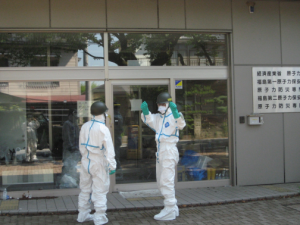



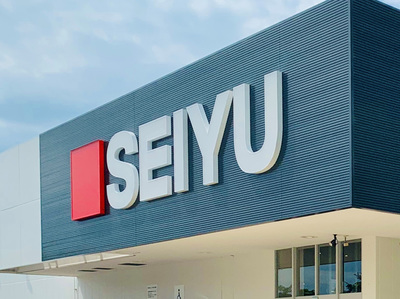



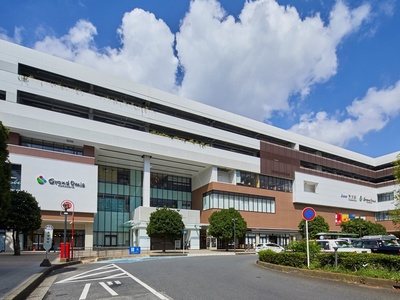


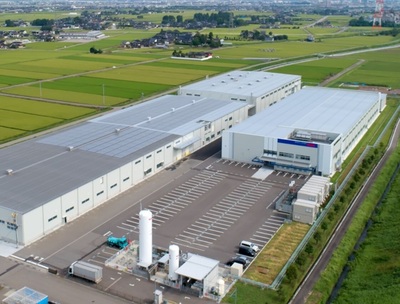

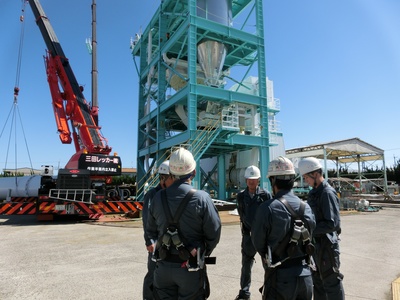






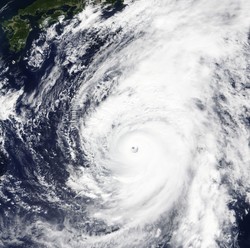


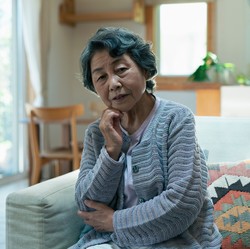
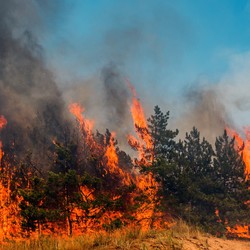
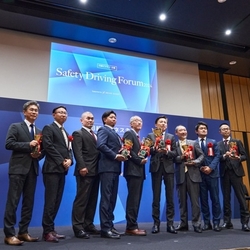
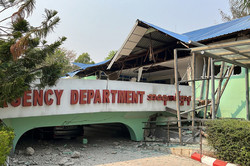

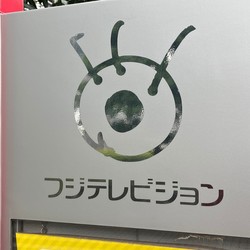


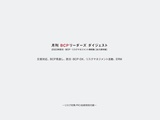
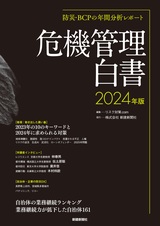
![2022年下半期リスクマネジメント・BCP事例集[永久保存版]](https://risk.ismcdn.jp/mwimgs/8/2/160wm/img_8265ba4dd7d348cb1445778f13da5c6a149038.png)




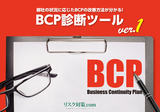
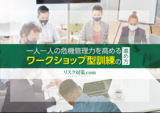
※スパム投稿防止のためコメントは編集部の承認制となっておりますが、いただいたコメントは原則、すべて掲載いたします。
※個人情報は入力しないようご注意ください。
» パスワードをお忘れの方